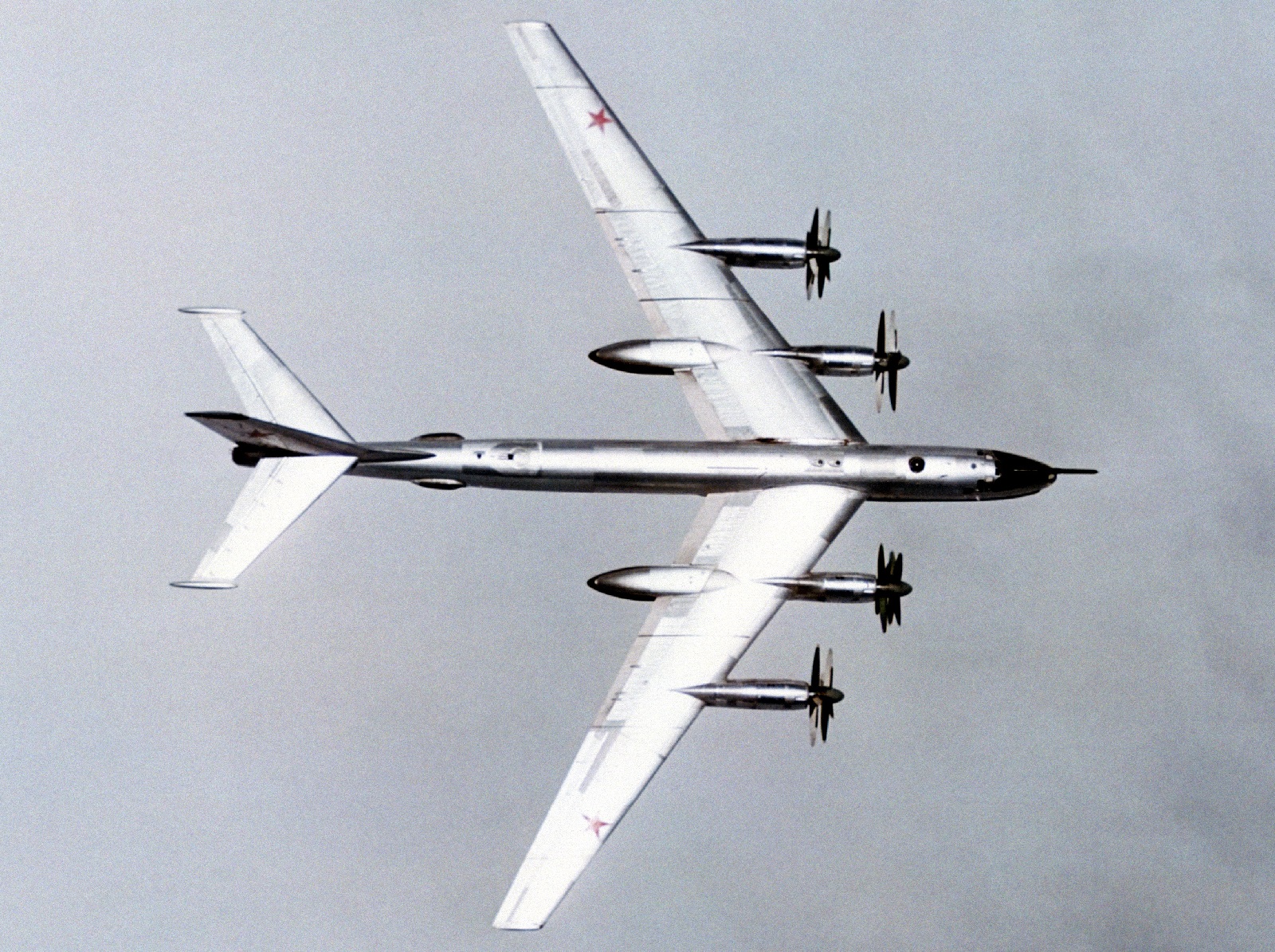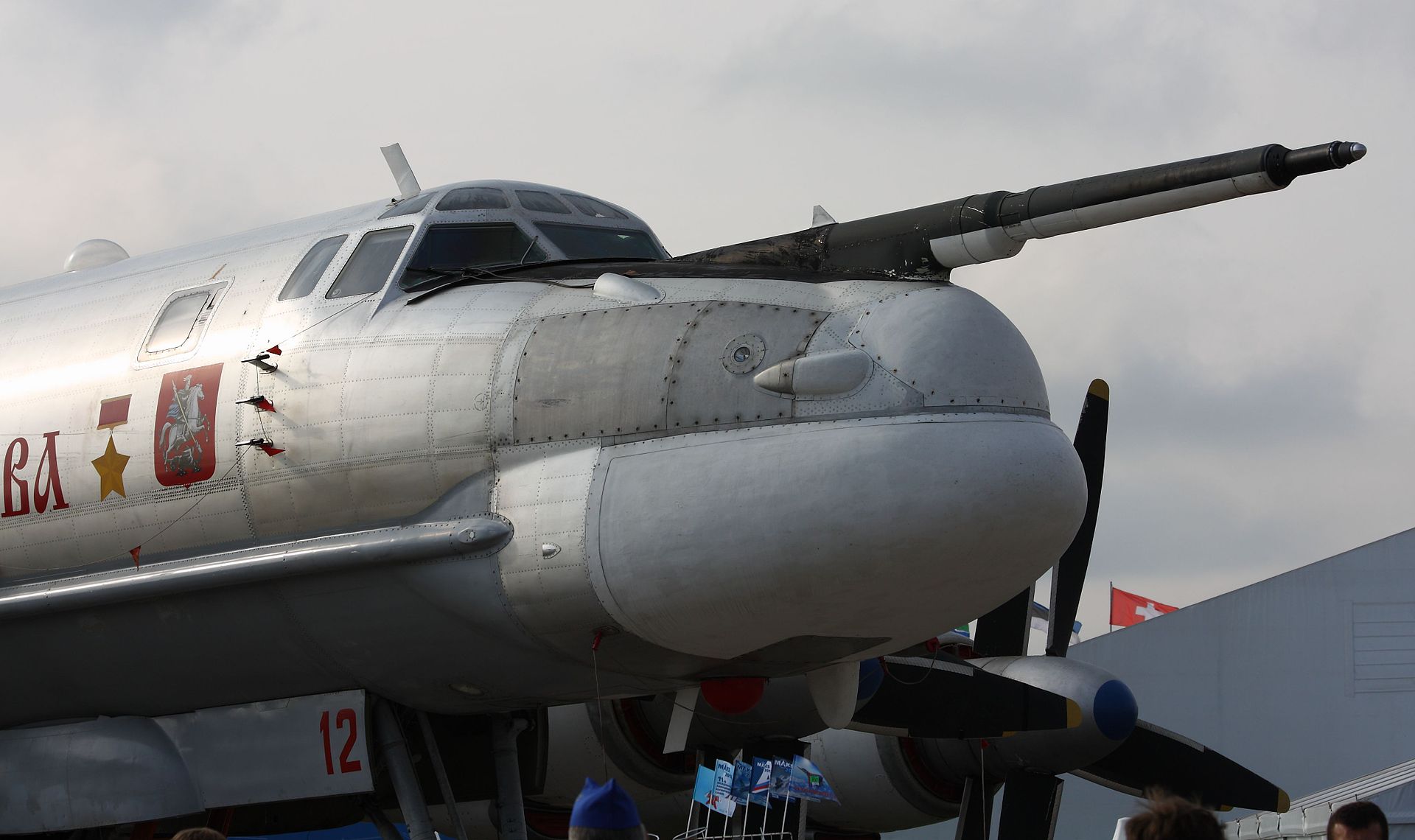Tu-95LAL: Russia's Crazy Dream of a Nuclear-Powered Bomber

The Soviets envisioned the Tu-95LAL as an aircraft whose atomic powerplant would give it unlimited range. They wanted a plane that could reach the United States and drop its payload without aerial refueling. But first, they needed to run years of tests.
Russia came up with quite a few really scary Cold War weapons over the decades. One idea, and thank god it was never created, was a nuclear-powered bomber, the Tu-95LAL. For all of our sakes, this plane was never deployed. Here is what one Russian military expert had to say about it:
How would like to fly in a nuclear-powered bomber and not know how much radiation you were being exposed to? That’s one of the fears Soviet pilots had when flying the Tu-95LAL, a derivative of the Tu-95 Bear bomber. The Soviets envisioned the Tu-95LAL as an aircraft whose atomic powerplant would give it unlimited range. They wanted a plane with the ability to reach the United States and drop its payload without aerial refueling. But first, they needed to run years of tests.
Tu-95LAL – Tough Idea, Complex Designs
The Tu-95LAL was an experimental airplane that began development in 1955. Soviet designers and engineers placed a small nuclear reactor in the bomb bay of a Tu-95. LAL stood for a Letayushchaya Atomnaya Laboratoriya, or flying nuclear laboratory. The airplane took at least 34 flights in 1961, and engineers only engaged the nuclear power-plant a few times. Soviet designers knew the project was going to take at least 20 years to deliver a working nuclear-powered prototype that could fly on long missions.
The ensuing Tu-119 program – this was just a renaming of the LAL – was so complicated that the engineers had to devise a “direct cycle” power converter and heat-exchange apparatus. Two of the inboard turboprop engines had heat exchangers. Raul Colon of Aviation-History.com explained these as such: “The main difference is that the air, after passing through the compressor, does not go to the reactor, it goes directly to the heat exchange system. At the same time, the heat generated by the reactor, carried in the form of fluid, goes to the heat exchange system. The combination of these two forces would enable the turboprop to produce the required amount of thrust.”
Plenty of Models, No Execution
The good news for the Soviets was that it appeared that radiation was not entering the crew cabin to a dangerous level – at least, so they thought. The pilot, co-pilot, and navigator were in an enclosed area surrounded by lead. The nuclear reactor was going to be connected through the fuselage and up to the wings to power the two engines with the heat-exchange system. The wings were swept rearward. The Soviets planned for the Tu-119 to have a cruising speed of 500 miles per hour.
Soviet engineers tried different models to improve performance. After working on the Tu-119, the Tu-120 model was proposed. This design placed the nuclear reactor in the rear of the airplane. Again, the wings were swept at a 45-degree angle to the rear. This airplane was supposed to be ready by the 1970s, but the Soviets gave up on it.
Undeterred, the Soviets tried again, this time with the Tu-132. Now the reactor was going to be housed in two of the engines. There would be a delta-winged shape, and the propulsion system would take a hybrid approach. Kerosene would be used for taking off and landing, while cruising would be nuclear-powered. The kerosene tanks would be housed in front of the reactor, and the Tu-132 was planned to have a lower ceiling. Despite the heady plans, the Tu-132 was canceled in the mid-1960s.

Nuclear-Powered Bombers Were Just Unnecessary
The Tupolev bureau just would not give up on nuclear airborne propulsion. They wanted to do something with a supersonic design using nuclear-powered jet engines, but this idea never even made it to the drawing board.

The Soviets should be given credit for their tenacity in trying to place a nuclear power-plant on airplanes, but it was just not realistic. It’s not clear if all this testing had a negative effect on the crew, but there weren’t many flights with the reactor turned on. Most of the Tu-95LAL prototypes stayed on paper, and further research was scratched. Soviet submarines were able to deliver nuclear weapons in a more straightforward and conventional manner, and the nuclear-powered bomber was no longer needed.
- Questions and Answers
- Opinion
- Motivational and Inspiring Story
- Technology
- Live and Let live
- Focus
- Geopolitics
- Military-Arms/Equipment
- Securitate
- Economy
- Beasts of Nations
- Machine Tools-The “Mother Industry”
- Art
- Causes
- Crafts
- Dance
- Drinks
- Film/Movie
- Fitness
- Food
- Jocuri
- Gardening
- Health
- Home
- Literature
- Music
- Networking
- Alte
- Party
- Religion
- Shopping
- Sports
- Theater
- Health and Wellness
- News
- Culture

